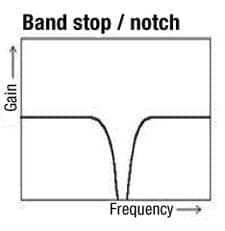Another audiological mystery solved by an intrepid audiologist-detective
“John Smith” is looking for his lost C# and wants to find it—now. Just another night and case to solve—with some help from Hallowell Davis and the audiological literature.

It was a dark and stormy Thursday afternoon when the telephone rang. It had been another tough week for the Audiology Detective Agency—with cases that are about as easy to solve as finding out how many shots were fired on the grassy knoll or why all frequencies in which one-half of their wavelength is less than the length of the ear tube are those that are enhanced by having a larger cross-sectional area. Such a tough week, in fact, that I had to fire my secretary.
I answered the phone and heard a voice that I didn’t recognize, but something about it was familiar. He said that he had lost something that was very important to him, and he had to see me right away. I gave him an appointment for later that evening. He said his name was Smith…John Smith.
I put on a tie and my best pair of detective sunglasses. I suspected that this would be a very difficult case that needed my very best pair of sunglasses.
He showed up a little after midnight wearing a hat and looking rather mysterious. He was also smoking—not a good sign for a dark and stormy night. For a moment, I thought of sending my secretary home until I realized she’d already left on Monday. So, I took out a fresh pad and began by taking a case history.
A Missing C-Sharp

Marshall Chasin, AuD,, is an audiologist and director of research at the Musicians’ Clinics of Canada, Toronto. He has authored several books, including Musicians and the Prevention of Hearing Loss (Singular Publishing), and serves on the editorial advisory board of HR. He also has guest-edited two recent special editions of HR on music and hearing loss (March 2006 and February 2009, the latter with Larry Revit, MA).
It seemed that this “John Smith” had lost the C# on his piano. Something about this was familiar, and I searched for more clues. But first I needed more information.
“When did you first notice that the C# was missing?” I asked, skipping over the pleasantries and getting right down to business.
“For about 5 years now,” Smith said. “It’s just become more of a problem now that I am retired and am playing more music…and it’s all C#s up to the one above the treble clef,” he added almost as an afterthought.
Just when I was about to ask another question, he volunteered more information. I thought it was strange that he did this. I’ve watched enough TV detective movies to know that people like him rarely volunteer free information, unless they want something. I proceeded with caution.
“But one thing is really odd,” Smith said. “I have no problem if I am listening to music that is being played in another room.”
“Ahhh…” Throwing all caution to the wind, I said, “Maybe I can use the course I took in room acoustics during my detective training many years ago.”
I recalled that high frequencies don’t like to go through walls. I had actually learned this as “the acoustic impedance is proportional to frequency,” but that was only for test-writing purposes. Low frequencies have long wavelengths, and as a rule of thumb, an obstruction needs to be at least one-half of the wavelength before it is obstructed. That’s why low frequencies (long wavelengths) go right through thin walls with barely any attenuation while higher frequencies with shorter wavelengths lose much of their energy when going through walls.
If he has less difficulty when listening to music played in another room, perhaps it is because the offending sound(s) are not as intense—they must be a mid or high frequency sound. Perhaps the culprit is not a low frequency fundamental but a higher one, or even a harmonic of a lower fundamental? But I was getting ahead of myself.
All this time, Mr Smith was just staring at me, with a slight smile, albeit a sad one, on his face. I pulled myself from my reverie and explained what I was thinking.
“It’s actually the same law of physics as seen when we cup our hands behind the ears to enhance the pinna effect,” I said. “Higher frequencies see the hand as an obstruction and reflect back to the ear.”
I felt proud of myself for my great ability to explain things, but Mr Smith said, “Law! Who said anything about the law?”
I quickly changed the subject.
“Let’s talk about this C# that you are complaining about,” I said. “There are many C#s on the piano keyboard—the one near the very middle at 277 Hz, the one above it at 554 Hz, or even the one an octave higher, at 1108 Hz?”
“I have no idea what you are talking about,” he growled. “What is this hurts stuff?”
He was starting to get angry and reaching for something in his pocket, when I suddenly remembered that musicians don’t usually talk about Hertz; they just talk about C and C#.
I quickly rephrased my question. “Come on over to my piano and show me which C# notes are missing.”
He slowly withdrew his hand from his pocket and, being surprised that I happen to have a grand piano in my office, smiled slightly as we approached the Steinway. I usually keep both of my Steinways in my office, but one was out for tuning. I won them both in a game of craps over in the east end.
With the finesse of a street-smart punk, he sat down and showed me. They were, indeed, the three C#s I had just mentioned (277 Hz, 554 Hz, and 1108 Hz). To him, the C# sounds were the same as the C notes beside them.
When he seemed to calm down a bit, I took this as a chance to educate him on the use of Hz instead of just piano notes. I explained that one only needed to multiply the note below it by the 12th root of 2 in order to get the exact frequency of the next semi-tone. If middle-C is 262 Hz, then C# is 262 Hz x 1.0595 = 277 Hz. He was not impressed and his hand slowly started reaching for whatever was in his pocket. I thought it better to change the subject again.
Recalling the Davis Files

Figure 1. Ultimately, notch filtering the 1000 to 1200 Hz region did the trick.
So…a quick recap. This Smith fellow has been missing the C# for quite some time. It is not a problem when listening to music from another room. This may mean that the problem is in the mid to high frequency region. And Smith hates any discussion of Hz.
Something about this was familiar. It was something distant, but familiar nonetheless, like my secretary’s perfume.
I looked through my detective files and found two yellowed articles with coffee spilled on them. They were Hallowell Davis’s 1947 and 1948 articles. That was it! (I also found a picture of me and my secretary at last year’s Christmas party, but that’s a different story.) Davis studied American servicemen who had volunteered to sacrifice their hearing in one ear. He blasted them with loud noise in one ear while protecting the other one, creating a permanent unilateral hearing loss. He then gave them two knobs: one that controlled frequency, and the other that controlled intensity. While listening to a tone in the normal-hearing ear, the volunteers adjusted the knob to the matched frequency and intensity that they perceived in the damaged ear.
For the region of hearing that was still normal, there was a good one-to-one correspondence; as the frequency increased in the good ear, the volunteers heard a similar increase in the damaged ear. However, when the test tone approached the area of sensorineural damage in the bad ear, as the test frequency increased, the volunteers noted that it was only an increase in intensity—and not frequency. That is, the tone was heard as being slightly louder, but flat, in the damaged ear. Davis called this diplacusis, and it is very rare. Only about 3% of the hard-of-hearing population have it.
As I perused these well-thumbed article reprints, I noticed that Mr Smith was starting to get antsy (ANSI?), so before he even started to move his hand toward his pocket, I piped up and said, “Let me do an audiogram.”
His hand shot toward his pocket and he stood up. “No lie detectors. Ain’t nobody gonna do an audiogram to me, see?” he growled.
I explained that I meant a hearing test, and his hand remained in his pocket holding something.
I walked over to my audiometric soundbooth, hoping that he would follow. He did. A while later, after a bit of “discussion” that included a black eye and a possibly dislocated shoulder, I had a complete audiogram.
Smith had a moderate sensorineural hearing loss, most likely related to presbycusis, but possibly due to his incessant Walkman playing since the early 1980s. He also volunteered that he knew how to shoot a Colt .45 gun. Smith smiled slyly when he said it. “I never wear hearing protection. I need to hear what’s around me. Understand?”
I understood. Completely. That’s why I decided to save my hearing protection speech for another day.
Diplacusis is typically related to inner-hair-cell damage, so having a moderate hearing loss supported this contention. If he had only a mild loss, the odds are that it would have been mostly outer-hair-cell damage, so the diplacusis hypothesis would not have fit.
I told him that I thought that he had diplacusis. His hand immediately went to his pocket, grabbed something, but before he could withdraw it, I told him that he was hearing things flat. He did not appreciate being called flat, hit me in the jaw, and eventually calmed down. I made myself a mental note to never see strange patients after midnight—especially on dark and stormy nights. Which seems to be most nights.
Solving the Case
So, was it C# at 277 Hz, C# at 554 Hz, or C# at 1108 Hz? I tried him with a pair of broadband WDRC hearing aids, as they had the capability of allowing me to use high pass and notch filtering. A notch filter (as well as a high pass filter) would chop out entire regions. Reducing the gain in these regions may resolve the problem.
I first tried high pass filtering all sounds below 300 Hz. No improvement. Smith sat stone faced.
I next tried notch filtering in the 550-600 Hz region (as well as high pass filtering the sounds below 600 Hz). Still no improvement.
I finally tried notch filtering the 1000-1200 Hz region. Smith smiled. Big improvement.
So it seemed that the C# (1108 Hz) just above the treble clef was the culprit after all. Earlier vague comments about C# being flat were actually related to hearing the second or third harmonics of the lower frequency C# notes, which occurred in the 1108 Hz region. It was not the lower frequency fundamentals after all. Just the fundamental at 1108 Hz.
It wasn’t a perfect solution, but I set Program #1 to a broadband configuration for speech. Program #2 was set with a notch filter at 1000 to 1200 Hz for music. Smith was happy. He quickly reached into his pocket, I started at him, but then he pulled out a key of C harmonica. He blew it once and handed it to me. “Thanks, Mack,” he said.
I was just about to say “My name is Marshall,” when I realized this could have been a fatal error. He left my office shortly after 2 am whistling (he was whistling, not his hearing aid). I nursed my jaw and shoulder, put an icepack on my eye, and started wondering where the nearest all-night gin joint was located.
Another case closed.
Correspondence can be addressed to HR or Dr Chasin at .
Citation for this article:
Chasin M. The Case of the Missing C# Hearing Review. 2012;19(06):16-19.




